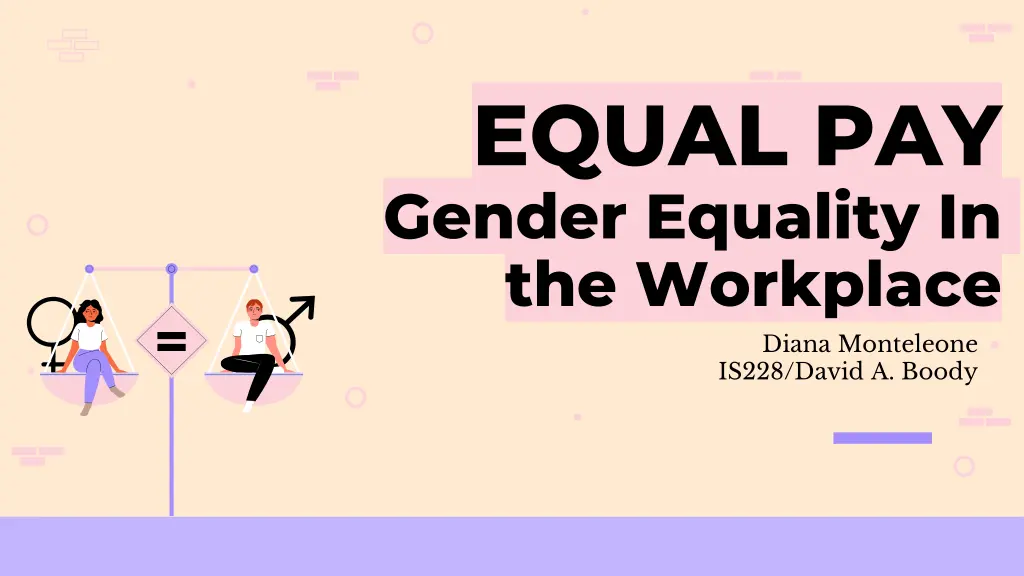
Gender Pay Gap: Analysis and Policy Solutions
Explore the gender pay gap issue, its causes, and existing policies. Discover solutions such as parental leave and flexible schedules for gender equality in the workplace.
Download Presentation

Please find below an Image/Link to download the presentation.
The content on the website is provided AS IS for your information and personal use only. It may not be sold, licensed, or shared on other websites without obtaining consent from the author. If you encounter any issues during the download, it is possible that the publisher has removed the file from their server.
You are allowed to download the files provided on this website for personal or commercial use, subject to the condition that they are used lawfully. All files are the property of their respective owners.
The content on the website is provided AS IS for your information and personal use only. It may not be sold, licensed, or shared on other websites without obtaining consent from the author.
E N D
Presentation Transcript
EQUAL PAY Gender Equality In the Workplace Diana Monteleone IS228/David A. Boody
Components of a Public Policy Analysis (PPA) The purpose of the PPA is to help you better understand social problems in your school & community. Below are the steps: 1.Define the Problem 2.Gather Evidence 3.Identify Causes 4.Evaluate Existing Public Policies 5.Develop Public Policy Solutions 6.Selecting the Best Policy Solution
DEFINE THE PROBLEM Around the world, there are gender pay gaps, including in the United States. In the U.S. these pay gaps have improved over the last 50 years, however, in 2020 women still earned less than men for the same work. Women experience disproportionate costs of living with child care expenses and are less likely to have equal pay in jobs in private sectors.
GATHER EVIDENCE In 2020, women earned just 84% of what men earned for the same job. In all occupational groups, women earned less than men according to the U.S. Department of Labor. 2020 US CENSUS EARNINGS RATIOS BY SEX, RACE AND OCCUPATIONAL GROUP
IDENTIFY CAUSES MOTHERHOOD PENALTY DISCRIMINATION MEN HAVE MORE FLEXIBLE SCHEDULES OUTSIDE WORKING HOURS. BIAS
EVALUATE EXISTING PUBLIC POLICIES LAWS AND POLICIES CURRENTLY IN PLACE ON A FEDERAL LEVEL: Equal Employment Opportunity Policy U.S. Department of Labor The EEO policy has been put into place to prohibit discrimination in the workplace and to protect employees rights.
DEVELOP PUBLIC POLICY SOLUTIONS 1. Enforce and enact policies that prohibit, not encourage, employees to work after their scheduled hours. 2. Government or company funded child care stipend for all parents who work for the company/organization so that women are not forced to choose between work and having a family. 3. Government funded paid parental leave for all companies so that women do not feel forced to only find jobs in a public sector (which is where equal pay may be more protected)
SELECTING THE BEST POLICY SOLUTION Feasibility HIGH MEDIUM LOW Government or company funded child care stipend for all parents who work for the company/organization so that women are not forced to choose between work and having a family. HIGH Effectiveness Enforce and enact policies that prohibit, not encourage, employees to work after their scheduled hours. MEDIUM Government funded paid parental leave for all companies so that women do not feel forced to only find jobs in a public sector. LOW
